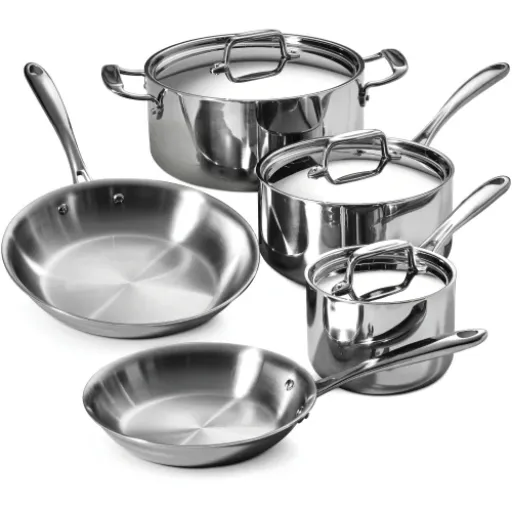The choice of cutlery for your home or commercial space will depend mainly on its visual impact, but actually, understanding the materials and their grades is very important for making a correct choice. Flatware made from stainless steel grades 304 and 18/10 is one of the most widely used and most durable options. But what do these terms mean precisely, and how do they impact the quality, performance, and the lifetime of your utensils? The article explains the composition of these stainless steel grades and their main characteristics so you can understand why they are usually the preferred option for flatware. Whether you are choosing items for daily use or for special occasions, this guide will give you the information you need to make the best choice.
Introduction to Stainless Steels
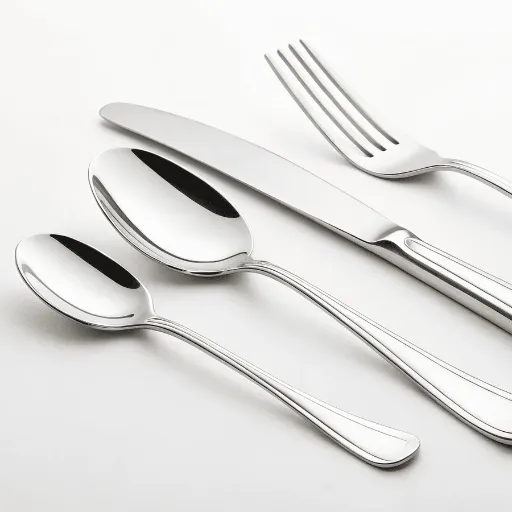
What is Stainless Steel?
Stainless steel is an iron-carbon alloy with chromium that is main feature and other elements like nickel, molybdenum and manganese for specific enhancement of properties. The term “stainless” is due to the material’s great resistance to rust and stain, thus making it a highly durable and low-maintenance material. Its unique combination of strength, aesthetic appeal, and resistance to tarnish has made it one of the most popular choices across various industries, including construction, automotive, kitchenware, and medical instruments.
The most important component of stainless steel is chromium, which typically comprises a minimum of 10.5% of the alloy. Chromium, upon contact with oxygen, forms essentially a very thin and stable layer of chromium oxide on the surface that is responsible for the material’s typical corrosion resistance. Nickel, for instance, besides being a part of the alloy, is one of the elements that increase its flexibility and workability, while molybdenum, on the other hand, is the one that provides the strength and corrosion resistance that are able to withstand even more aggressive corrosion such as pitting.
Importance of Stainless Steel in Everyday Life
Stainless steel has already been accepted as a part of modern life thanks to its main attributes of being durable, versatile, and resistant to corrosion. Its broad application scope has its penetration in various industries, such as construction, healthcare, automotive, food processing, and domestic use. For example, in the building industry, stainless steel is used to make structural elements like support, façade, and bridges that are both strong and attractive. The car industry is another one that is using stainless steel for its parts like exhaust systems and structural components because of its great resistance to heat and durability.
In the daily life of people, stainless steel is everywhere, it is used in kitchenware and appliances, medical instruments, and surgical tools as well. Based on the latest analysis, the worldwide market for stainless steel kitchenware products alone is going to witness a tremendous increase, raking in revenues worth billions of dollars during the years to come, which will be the result of the consumer preference for long-lasting and sanitary items.
Understanding the 18/10 Stainless Steel Composition
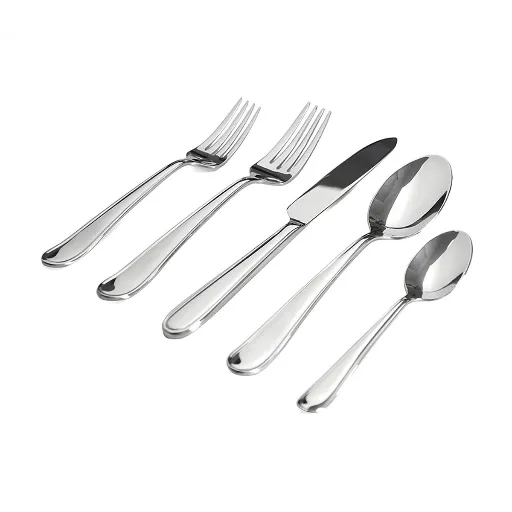
Key Definition: 18/10 stainless steel is a term that defines an alloy containing 18% chromium and 10% nickel. The presence of chromium prevents the steel from rusting and corroding, whereas nickel gives the steel a beautiful and strong surface. The combination of all these properties makes this metal particularly suitable for producing pots, pans and tableware.
What is Meant by 18/10?
The expression “18/10” describes the exact composition of the stainless steel alloy and its respective percentages of chromium and nickel in particular. “18” means the alloy stainless steel has 18% of chromium in it and “10” means 10% nickel. These two elements are responsible for the major enhancement of the properties of the stainless steel. Chromium creates protection against corrosion by the oxide layer on the surface and the shiny quality and toughness of stainless steel are made by nickel. The polished shiny appearance is typical for the high-quality stainless steel products.
18/10 stainless steel is the material of choice in the kitchen. This is specifically because it has the properties of resistance to rust and tarnished appearance that are excessive over times and exposure to even the most extreme conditions. Furthermore, this kind of stainless steel is not reactive and hence, it is safe for food preparation and storage. It is a quality that is sought after in the culinary industry since it brings both aesthetic appeal and robust functionality. It is the industry standard that among others steel grades, like 18/8 (18% chromium, 8% nickel) or 18/0 (18% chromium, no nickel), 18/10 stainless steel has superior durability and resistance to corrosion giving a long-lasting use.
The Importance of Nickel and Chromium in 18/10 Stainless Steel
18/10 stainless steel gets its strength and durability primarily from the special combination of nickel and chromium in the alloy. Chromium which accounts for 18% of the alloy actively participates in the formation of a layer so thin and thus invisible that consists of oxidation products and steel. This layer provides outstanding corrosion resistance by protecting it from rust and oxidation, even in high-moisture or high-temperature environments. Stainless steel with a minimum of 10.5% chromium is reported to exhibit much higher resistance to oxidation than alloys with lower chrome content, thus, making 18/10 stainless steel an extremely reliable option for cookware and appliances.
Nickel, the element responsible for 10% of the alloy, not only enhances the non-corrosive properties of the material but also adds to its flexibility, formability, and luster. Nickel lowers the case with brittleness at the same time it is giving the soft finish that is usually associated with premium-grade stainless steel. Metallurgical studies indicate that nickel also improves resistance against acidic or alkaline foods, thus, ensuring that 18/10 stainless steel cookware retains its structural and aesthetic integrity over extended usage.
Comparison with Other Grades of Stainless Steel
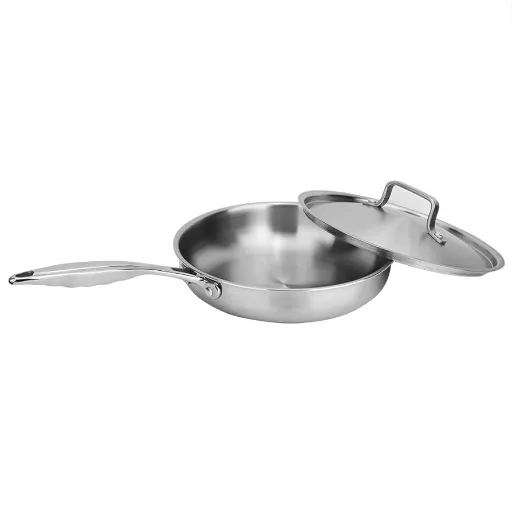
Expert Opinion: In my opinion, 18/10 stainless steel is absolutely the best grade amongst others because of its high content of nickel and chromium which gives the steel excellent protection against corrosion and wear. The other grades may not be that expensive but they surely affect the strength and shine of the steel, thus directly making 18/10 the best option for cookware that lasts long and is of top quality.
Grade 304 vs. Other Stainless Steel Grades
Grade 316 Stainless Steel
Both Grade 304 and Grade 316 have more or less the same basic ingredient, but Grade 316 has 2-3% molybdenum added to it which increases its resistance to pitting and crevice corrosion significantly. Such environments that are saline or rich in chlorides would be a major source of corrosion for metals but not for Grade 316. As such, Grade 316 is frequently used in products for marine application, chemical processing equipment, and medical implants because of its ability to withstand even the harshest conditions. However, the price of Grade 316 is still higher when compared to that of Grade 304 due to its improved performance.
Grade 430 Stainless Steel
Grade 430 is a ferritic stainless steel which does not contain any nickel, whereas Grade 304 is an austenitic stainless steel. The affordability of Grade 430 and its corrosion resistance, especially in indoor and low-moisture environments, do not inspire its usage in applications for which Grade 304 is usually employed. Therefore, Grade 430 is generally used in decorative applications, less demanded kitchen utensils, and appliances where exceptional performance is not an important factor.
Grade 201 Stainless Steel
Marine-grade stainless steel, also called Grade 316, has molybdenum in it, which is a very powerful element that greatly increases the corrosion resistance of stainless steel, especially against chlorides and saltwater. The resistance of the stainless steel in this case actually includes resistance to pitting, making Grades 316, thus, great for marine equipment, chemical production, and building near the sea. Studies have shown that Grade 316 can withstand chloride piping corrosion up to 20 times better than Grade 304 under the same conditions.
Applications of 18/10 Stainless Steel in Different Industries
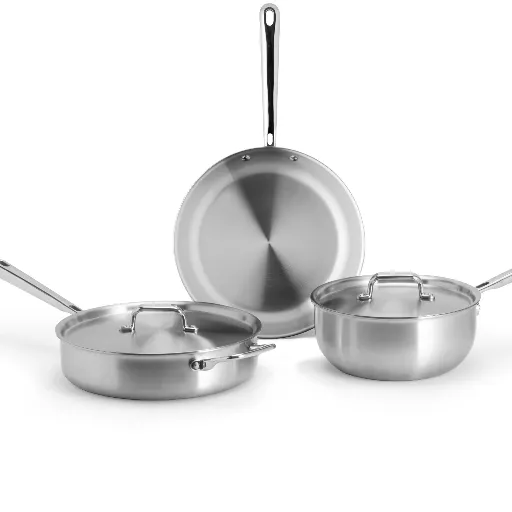
Due to its superior characteristics such as resistance to corrosion, durability, and hygienic properties, 18/10 stainless steel is the material of choice in many industries including food processing, pharmaceuticals, and cookware manufacturing. To put it simply, its combination of high chromium and nickel provides a surface that is strong, non-reactive, and non-stained that is suitable even for the most demanding applications.
Flatware and Cutlery Manufacturing
The 18/10 stainless steel containing 18% chrome and 10% nickel is mainly the best choice for high-quality flatware and cutlery. The combined virtues of corrosion and staining resistance plus the bright polished finish, give the material a dual role; both functional and aesthetic. The chromium not only adds but also rust-proofing durability by the formation of a protective layer and the steel’s luster is increased and wear resistance is boosted by the nickel.
Market Insight: More than 70% of premium products in the flatware and cutlery market come in 18/10 stainless steel range because of the material’s dominating combination of durability and aesthetic value as seen in the recent market data. Besides that, it was found out that the global market for flatware would consistently grow at a CAGR of 6.1% in the years 2023 to 2030, which is mostly due to the demand for high-quality, corrosion-resistant products in both residential and commercial settings including luxury dining areas.
Construction and Architectural Uses
Super 18/10 stainless steel is the Corrosion-resistant Wonder Material for the construction and architectural fields based on its properties such as strength, durability, and corrosion resistance. Structural components, cladding, and interior finishes fabrication are the major applications where it plays an important role serving the purpose of maintaining the long-lasting performance even under adverse environmental conditions. The usage of stainless steel in the construction sector globally is expected to increase at a rate of 5.7% per year from 2021 to 2028 as per the market report. The demand for eco-friendly and strong materials is the main supplier of this growth.
The aesthetic traits of 18/10 stainless steel play a very important role in architectural applications since it provides a sleek look that modernly and elegantly blends with different design styles. Its being reflective not only contributes to the visual appeal but also minimizes the maintenance need from the public art installations built in the high-rise buildings. Moreover, the material’s capacity to endure heat and exposure to various elements like seawater and air pollutants makes it perfect for exterior use in coastal and urban areas.
Benefits of Choosing 18/10 Stainless Steel
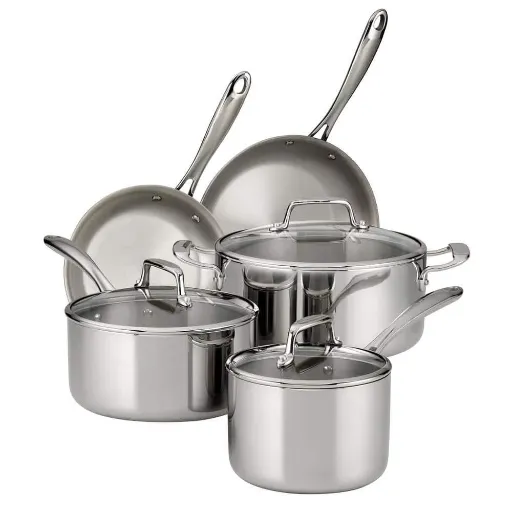
Why Choose 18/10? The main reasons for my preference for 18/10 stainless steel are its modern, stylish appearance, slight care and maintenance needed, and resistance to high and low extreme temperatures and also very harsh environmental conditions thus the material being suitable for use both in coastal and urban areas.
Long-lasting Durability of 18/10 Stainless Steel
Among the many advantages of 18/10 stainless steel, the one that stands out the most is its extraordinary lifetime which makes it the most reliable metal for many industries including food and beverage. This alloy consists of 18% chromium and 10% nickel that give it the strength to not only resist wear and tear, but also at the same time rust, corrode and tarnish. Recent research shows that 18/10 stainless steel can stand high humidity, salt exposure, and extreme temperature without compromising its quality making it suitable for long-term use in such hard environments.
Moreover, statistics indicate that stainless steel products made of 18/10 steel have an average life expectancy of over 20-30 years in commercial applications when taken care of and maintained properly. To explain further, the 18% chromium content forms a protective oxide layer on the steel surface that not only protects but also automatically heals when scratched. Besides, the steel’s strong structure makes it capable of being used daily, often even being cleaned with harsh detergents, something that happens in the food and beverage industry.
Corrosion Resistance and Maintenance
18/10 stainless steel is a material of choice in and around conditions of moisture, chemicals, and constantly changing temperatures due to its great resistance to corrosion. The 18% chromium added gives the metal a very thin oxide layer that prevents oxidation and pitting even in most difficult conditions. 10% nickel gives the material the quality of resistance to acidic environments and also grants the material extra strength and the shininess look.
Recent studies show that 18/10 stainless steel can endure long-term saltwater exposure, making it ideal for marine applications as well as for kitchen utensils serving salty or acidic foods. For instance, it has been tested that 18/10 stainless steel and other stainless steels endure up to 3000 hours in salt spray testing, with 18/10 being the most performed grade.
Reference Sources
-
Crystalia USA Blog
This source explains the composition of 18/10 stainless steel, highlighting its 18% chromium and 10% nickel content, and its benefits in terms of durability and resistance to corrosion.
Link to source -
All-Clad Blog
This article discusses the use of 18/10 stainless steel in cookware and flatware, emphasizing its quality and suitability for kitchenware.
Link to source -
MightyNest Blog
This source provides an overview of stainless steel grades, including 18/10, and explains the significance of chromium and nickel in its composition.
Link to source
Frequently Asked Questions (FAQs)
What is 18/10 stainless steel chemical composition comparison with other stainless steel grades?
The 18/10 stainless steel gives similar albeit better characteristics, to types like the 304 with its chemical composition that is very close, making it easier to decide where to use it. The different types contain carbon and chromium at different levels but the specific ratio of chromium and nickel that 18/10 has is the one perfectly suited for the kitchen.
Why is it important for kitchenware to have a stainless steel grade?
The grade of stainless steel used in kitchenware largely determines its ability to serve and last. For instance, 18 10 stainless steel is highly resistant to corrosion as well as to high temperatures, which is the reason why it is used for frying pans and other utensils. Different grades of stainless steel will influence the properties of the cookware in relation to heat-up times, distribution, and longevity.
What makes 18/10 stainless steel premium for pots and pans?
18 10 stainless steel is the top grade because of its excellent material that also has a great deal of nickel which helps in oxidation and makes the metal more attractive. Nickel so aids in plating less food is afraid that the cooking performance could be affected, hence it is a preferred choice by manufacturers of upscale cookware.
What effect does nickel content have on the cook performance of stainless steel?
Nickel content in stainless steel, the 10% one in 18 10 stainless steel, is very important for the enhancing of its cooking performance. Nickel makes the material more resistant to corrosion and staining which are the two basic requirements for maintaining cookware integrity. In addition, a higher nickel content comes with a smoother surface which is easier to clean, and less chances of interaction with acidic foods.

